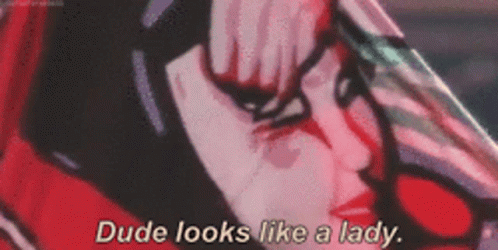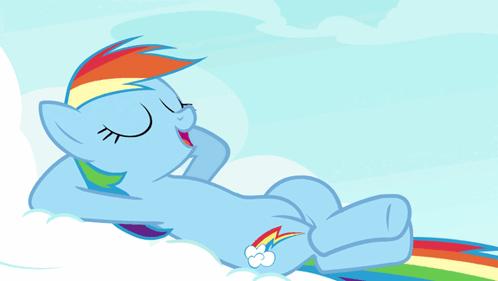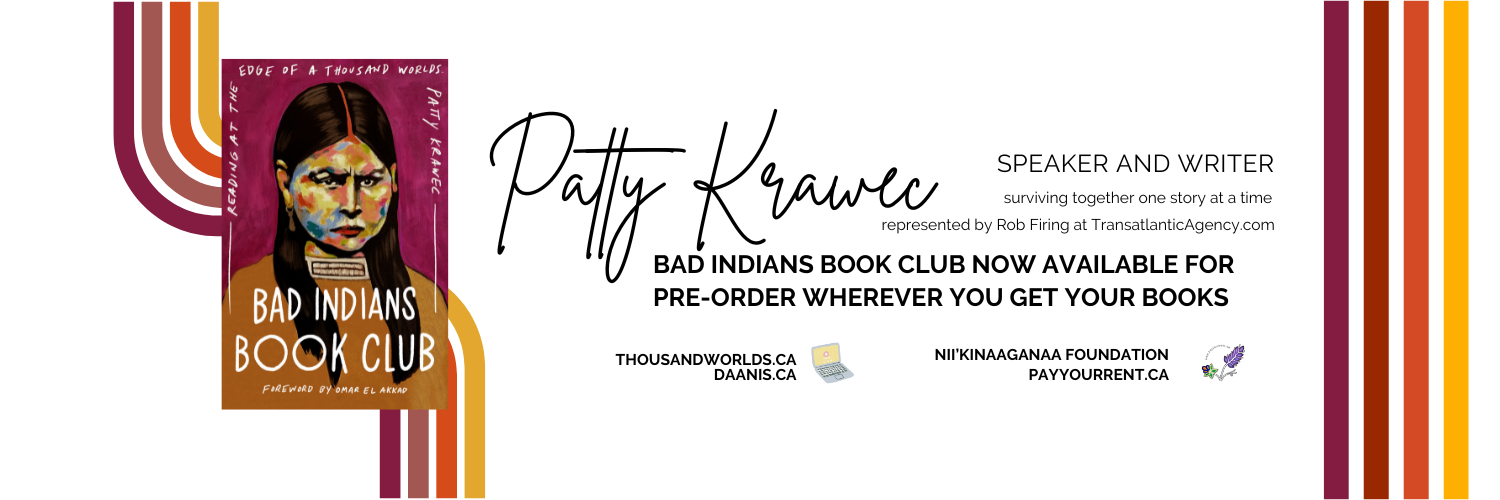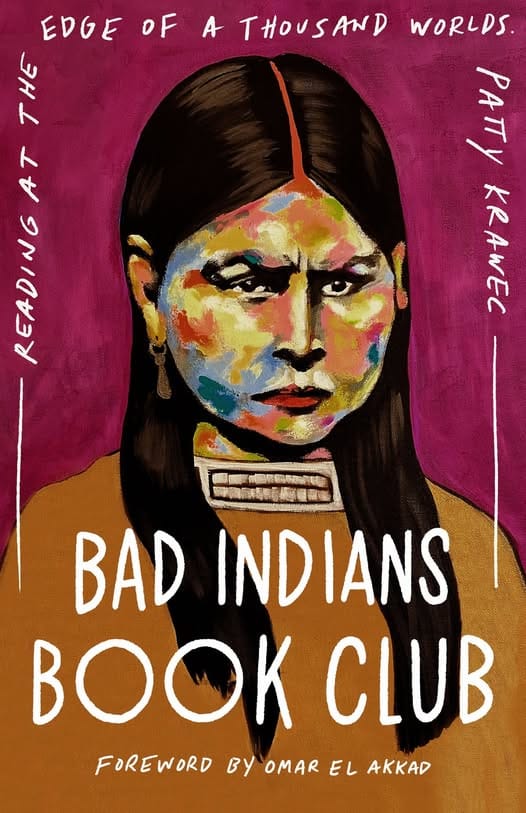Nanaboozho and the buzzard

On Monday April 14 Lauren Sanchez, the soon-to-be bride of Jeff Bezos, took galpals Katy Perry, Gayle King, and Kerianne Flynn, for a spin in her boyfriend's rocket. The group left Van Horn, Texas and instead of going just over 60 miles southeast to the Tumble In RV Park in Marfa, they traveled that distance in a parabolic arc up to the edge of space where they floated around for 10 minutes before coming right back down again. And sorry Gayle, but flying the same flightpath as Alan Shephard does not make you an astronaut.
Their gushes about gratefulness and perspective are grotesque. Lots has been written and said about them. There's a hilarious tiktok about how they thought we would react vs how we actually did.
I'm thinking about this because today's story, which is just next in chronological order and not chosen for a purpose, about Nanaboozho begins with him trying to convince a bird to let him come sit on a cloud with him and ends rather badly, as we're coming to expect.
Before we go further, hello to newly signed up members! Paid subscribers help keep the lights on, but anyone can help expand my audience by sharing this post through email or on social media.
I am working my way through Ojibwa Texts by William Jones with some additional insights from The Trail of Nenaboozhoo and Other Creation Stories as well as Serpents and Other Spiritual Beings which are stories collected and told by Isaac Murdoch (Serpent River First Nation), and Gii-Nitaa-Aadisooke: Ojibwe Legends from Lac Seul collected and told by Patricia Ningewance (Lac Seul FN). New to the team is The Sound the Stars Make Rushing Through the Sky: The Writings of Jane Johnston Schoolcraft, edited by Robert Dale Parker. Other sources are linked as they come up or included in another section about what I'm reading.
These essays are not meant to be authoritative interpretations, just personal reflections.
When we last saw Nanaboozho he was shaking the "dust" of the city of dirty water off his whole body. While walking along he notices somebody seated on a cloud. Hallooooo he says. It's been a while ... Being well aware of Nanaboozho's nonsense, this person responds with "dude, I am afraid of you."
Nanaboozho blinks innocently and says "it's been such a long time, and I really do miss your smile." This wears the poor guy down and he makes room on the cloud so Nanaboozho can sit beside him. Settling in Nanaboozho sighs, "I'm not talking about moving in, and I don't want to change your life." Despite Nanaboozho's protests to the contrary, our friend is worried about what shenanigans he is sure to pull, and since there's a warm wind blowing, the stars are out, he nudges the wind and it starts breaking up the cloud until eventually Nanaboozho realizes he's going to fall. And fall he does.
This time he lands in a hollow tree where he gets stuck. He hears two women talking about a Gray Porcupine that lives somewhere around here. Nanaboozho calls out that he is the Gray Porcupine and that he's stuck inside this tree. The women make a bet. Whoever frees the Gray Porcupine gets to marry him and they commence chopping. Nanaboozho hears the bet and hopes to himself that the younger sister wins, but it's the older sister who finally breaks apart the tree. He jumps out laughing, you really thought it was a Gray Porcupine! And off he goes.
He's still mad about that bird that tricked him by having the clouds break apart and comes up with a truly bizarre revenge scheme that winds up with his quarry sticking his head up Nanaboozho's butt which clamps on him like a bear trap. When Nanaboozho eventually frees the bird he says, everybody's going to call you a buzzard, whose name in Ojibwe means something like dirty wing.
The girls who free Nanaboozho from the tree show up in a few connected stories. They are the First-Born-Daughter and her younger sister who Jones calls Foolish Maidens. If you search "foolish" in the linked document you'll come to a brief discussion of them as well as the stories themselves. It isn't clear why he calls them that, although they do tend to act foolishly in their perpetual search for a husband. In Ningewance's collection she tells the story of Nanaboozho becoming a woman which includes several stories which end with him falling off a cliff into this hollow tree where the sisters find him. They don't chop it down, apparently he can get out of this easily, but he hasn't any clothes on so he asks them to leave their dresses behind, which they do, and he walks off looking exactly like a woman.

Awesome as buzzards or turkey vultures are, I am most interested in where the story begins: Nanaboozho and his desire to float on the cloud. Jones says that when he saw somebody floating on a cloud he was "truly envious" and I can appreciate that. I would also be truly envious of somebody floating around in the sky that casually.

Which brings me back to Jeff Bezos and his willingness to use the vapid feminism of girlbossing to advertise his personal space race while also promoting a book, a CD and whatever else the riders coincidentally have going on.
In 1970 Gil Scott-Heron released Whitey on the Moon, a spoken word piece about medical debt and poverty while everyone around him was celebrating the Apollo Moon landing. It must have felt so unreal, the social and economic disparities growing by the day. Governments don't have money for those made marginal, for communities who are suffer what Ruth Wilson Gilmore calls "organized abandonment" but they've got the money to put whitey on the moon.
Organized abandonment is a repurposed business term. It was coined by Peter Drucker to describe a business process by which you starve a project of resources until it is no longer viable at which point you cancel it. Gilmore, and others, have applied it to social policy and the ways that governments at all layers cut funding in particular ways until the community falls apart and then the land becomes available for whatever the city, province, or state wanted it for.
Africville is the example that comes most immediately to mind although there are hundreds of such communities in Canada and the US that experience this. Africville was a Black community in the north end of Halifax with a history that goes back over a hundred years. The city of Halifax refused to provide the kind of infrastructure that everybody else got. No sewage, no clean water, no garbage disposal. Despite paying taxes, they got no investment from the city. There were always excuses and it was never the city's fault.
I'm wrong. The city did make investments. They put an infectious disease hospital, a prison, and a dump nearby.
By 1964, citing health and safety issues, Halifax City Council decided to relocate this community. You'll be surprised to know that there was no meaningful consultation, according to the linked website less than 20% of residents had any contact with the Halifax Human Rights Advisory Committee tasked with gathering their opinions on the matter. By 1970 everybody was gone. Except for one man whose caravan is on the now historical site and who is happy to talk to any visitors about what Halifax did to his community.
In addition to applying the business conceptof organized abandonment to social policy, Ruth Wilson Gilmore gives us a definition of racism that is useful here. It is, she says in the book Golden Gulag, the state-sanctioned or extralegal production and exploitation of group-differentiated vulnerability to premature death. I mention this because it provides a very clear and specific metric by which to assess whatever is happening. You can look at the stats for incarceration, for example, and come up with the sad story of how many people are in prison. Or, you can look at the same stats through the lens of differentiated groups and read the horrific story of groups who are disproportionately incarcerated. Drill a little deeper into these groups and you can see that specific communities are being abandoned in a very organized way. Meanwhile, Whitey's on the moon.

The space race was part of the cold war, it's always been militarized. Despite the PR it was never just about exploring and boldly going. It was about dominance, getting there first, planting that US flag and claiming the moon for all mankind, via the US of course. Even my beloved Star Trek with it's well documented history of social justice themes is basically a military ad for the Federation. Now we've got a new race for dominance and instead of being lead by the military it's being lead by billionaires like Jeff Bezos and Elon Musk who want to mine asteroids and colonize Mars, or maybe build a giant shopping mall where people can live in space but stay close to earth.
This flight had two actual scientists on it: Amanda Nguyen who is a Vietnamese civil rights activist and bioastronautics researcher and Aisha Bowe, a Bahamian-American aerospace engineer. Neither of them flew the New Shephard, they were all passengers. This was not a flight like you saw in Apollo 13 with a pilot and copilot flipping switches and frantically doing math with a slide rule. These ships are entirely flown by computer. Even though it is part of a militarized desire for dominance, NASA and associated space agencies do scientific research that has benefits beyond military capacity. The fact is if you want to do physics or anything space related you have to accept some connection to the military because of the massive amounts of money involved. And talking about money, the commodification of space is giving us other priorities which aren't necessarily better.
It's all so sad. In this story of Nanaboozho, Jones says that "they started away, the wind wafting the cloud. By and by hardly was the earth to be seen." I know it's just a reference to how high up they where. They were so high up that they could hardly see the earth anymore. That's clearly what has happened to these people whose lives have taken them to rarefied socio-economic places. They just can't see us anymore. I don't mean being up in the sky, I mean how they got there.
Blue Origin and Musk's Space X are space tourism, selling trips to space for a gazillion dollars and I do not doubt that it would be an amazing experience. If I was offered a free seat it would be really hard to say no. Mostly I'm weary of billionaires who need to go all the way to space to have superficial epiphanies about how we're all in this together and you can't see borders from space and all the other inane things they say.
If they wanted to get perspective, they could have travelled a little over 60 miles southwest to Marfa, Texas instead. 1,600 people live there, a long way from it's boom in the 1930's and about 25% of the half white/half Hispanic town lives in poverty. They could have gone to Fort Hancock, 63 miles away at the US/Mexico border, a place where migrants cross the desert into the US, many of whom are found dead from heat exhaustion and dehydration. Mexico is just across the Rio Grande from Presidio, just 70 miles away, and a place where 43% of the population is below the poverty line. Hispanics, a group often also designated as white, make up 90% of Fort Hancock and Presidio.
The realities of migrants, poverty, and death that lands in distinctly differentiated groups isn't the perspective that Jeff Bezos is selling us. He's selling a neoliberal dream in which we can all be astronauts, not if we study and apply ourselves in STEM but if we get rich enough to afford it, or have the name recognition that lends credibility or prestige to these vanity projects. And a lot of people from Oprah and the Kardashians to myriad others are applauding loudly, wiping tears of pride, having also lost sight of a humanity struggling with basic needs while whitey's out in space. Because don't get it twisted, there might be Diverse People up there too but they are there to serve a project that disproportionately benefits another distinct group.
I have no idea what Aisha or Amanda's personal beliefs are, but far too often negatively racialized people who achieve a particular level of success look down on those who don't as if they achieved this so why can't everybody. It's why DEI is such a mess, for a lot of places it really isn't about making the change they badly need. It's more often about finding the fight Panetone shades to give whatever you're doing legitimacy. That's the original context for Zorah Neale Hurston's famous line in her memoir Dust Tracks on a Road by the way. It was those who had achieved middle class respectability who looked down on the others and said "not my skinfolk, not my kin folk."
This crew launched close to the place where people die regularly attempting to cross the desert, where walls are being built to keep people out (which funnels them into that desert), where people without documents are held in custody despite immigration being a civil and not a criminal matter. It is the very picture of money being siphoned off the most vulnerable and then whooshed into the atmosphere where Bezos and Musk and so many others grab it like some demented money-grab game.

Nanaboozho's story doesn't end there of course, with him floating on the cloud and losing sight of the earth. It doesn't end with him falling to earth and getting stuck in a tree. It doesn't end with him tricking two women into rescuing him or dressing up in their clothes (there's another whole blog post). It ends with a bird sticking his head so far up Nanaboozho's butt that it gets stuck there.
And for me? That's the perfect image for far too many of us who refuse to see what's around us and prefer a vantage point that allows us to pretend it doesn't exist.
Last time I recommended the whole Movement Memos podcast. This particular episode, Rocket Launching Billionaires Promise a New Pie in the Sky is part of a series on the new agey long termism espoused by Musk and his techbro friends, like Peter Thiel whose philosophy and political activism is objectively terrifying. You can also read Mary-Jane Rubenstein's Astrotopia where she explores this in greater detail.
Talking about people we'd rather not see, Eduardo Galleano's Memory of Fire trilogy tells the history of what we know as Latin America from the millenia before contact up to the present day (mid-90's if I recall correctly). Told in brief snapshots of people and events it provides a fascinating look at origins, colonization, and the dictators who emerged from US interference. If you don't know much about Latin America, this is a great place to start. And if you do know something, these snapshots tie things together in very interesting ways.
For a perspective on astrophysics and social justice, theoretical physicist Chanda Prescod-Weinstein's The Disordered Cosmos: A Journey Into Dark Matter, Spacetime, and Dreams Deferred is wonderfully written. I'm not sure that I understood most of her discussions about physics, but you don't need to in order to understand what she is on about and how these ideas connect in our lives and communities.
If you are a Trekkie or just curious about the whole phenomenon, may I recommend A Different Trek by David K Seitz which is about DS9 and the way it deals with the aftershocks of colonization and genocide through its location near the Bajoran homeworld. Movement Memos did an interview with this author as well in an episode called Remembering how to care, lessons from Deep Space Nine.
Border and Rule by Harsha Walia remains one of my favourite books to help us understand how borders function globally to create wealth and cheap labour so that people like Elon Musk and Jeff Bezos and all their techbro friends can finance their dreams of controlling this earth and colonizing others.

Reading groups or book clubs have a long history of exploring new ideas. Indeed, the power of this kind of collective reading is such that during the years of chattel slavery, Black people were not allowed to read at all. Reading groups proliferated in the 1970s as a mechanism for consciousness-raising, and they continue to be sources of grassroots education across a range of racial and political categories. There is a reason, after all, why more and more people seek to ban the books that point us toward collective liberation.
If you want to book me for something you can book me through Transatlantic Agency! Find out more about that on their website, including the topics I can bring to you. Or you can just email Rob Firing at rob@transatlanticagency.com

Every month the Nii'kinaaganaa Foundation collects funds from people living on Indigenous land and redistribute them to Indigenous people and organzers. You can find out more information on the website which is now powered by ghost, which means that you can become a subscriber there just like you are here!

